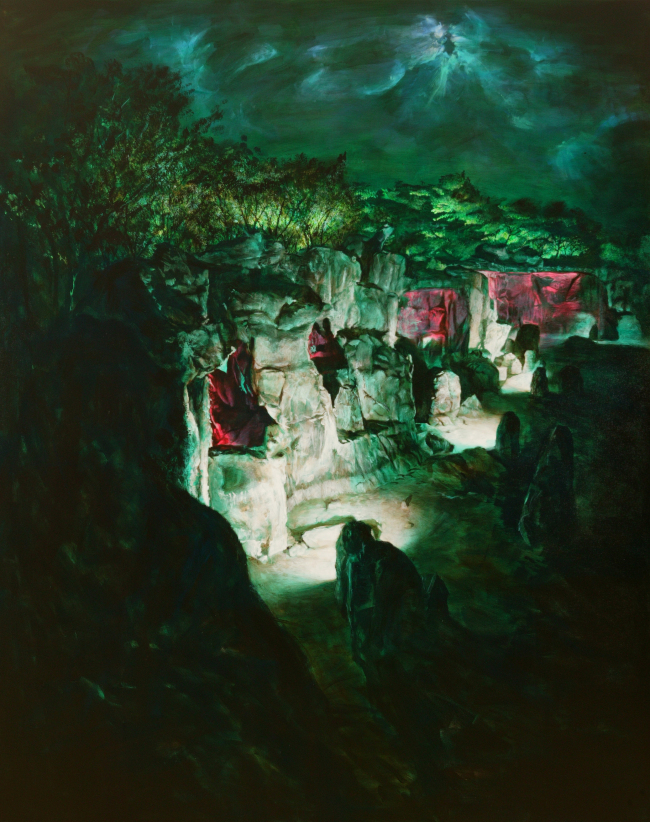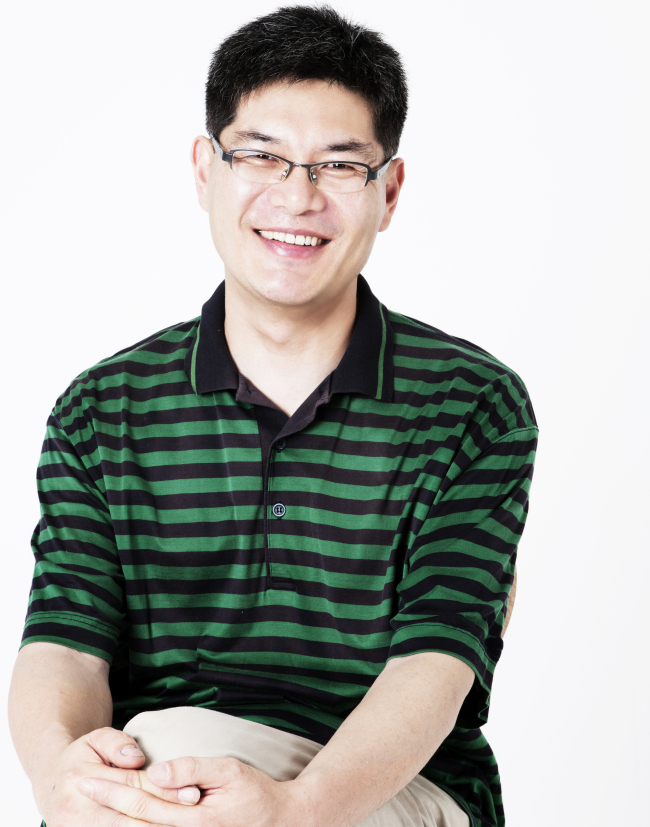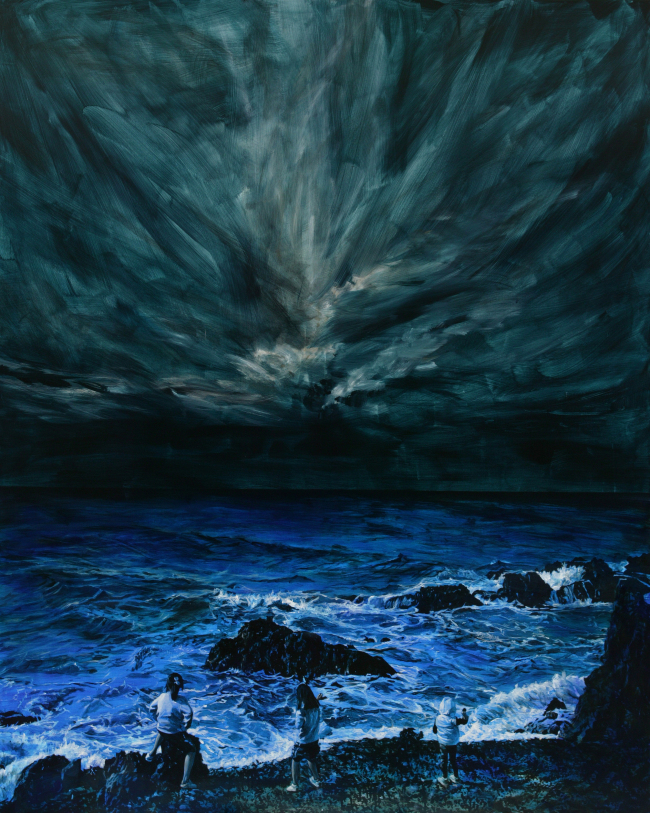Artist Kong Sung-hun paints landscapes, which is considered a rather outdated genre by the contemporary art scene. He takes a traditional approach to painting: he takes pictures of images, draws the second images filtered through his inner self and paints on canvas.
He prefers subjects surrounding him ― dogs in his front yard, artificial tree sculptures and love motels he sees on his way to his studio and the stormy sea.
The traditional practice in painting, however, has been neglected amid increasingly diverse contemporary art practices, involving a variety of materials and scales. While paintings still are favored by collectors and people at art fairs, they have taken an uncomfortable position in many trendy contemporary art practices.
 |
“Artificial Cliff,” 2008 by Kong Sung-hun. (MMCA) |
In a surprise move, Korea Artist Prize chose Kong as the artist of the year on Tuesday, recognizing his “commitment to paintings that are regarded as an old medium that fails to show new results amid trendy contemporary art methods,” according to the judging committee.
“I am grateful (that my paintings are recognized). I think today’s art is divided between biennales and art fairs. I have been welcomed at neither commercial art fairs, nor biennales because I paint,” said Kong during a group interview on Thursday at the new exhibition building of the National Museum of Modern and Contemporary Art, Korea, in Samcheong-dong, Seoul.
 |
Kong Sung-hun, winner of the Korea Artist Prize 2013. (MMCA) |
Kong, who studied painting and electrical engineering in college, did installation works and media art in the 1990s in college and right after graduation.
“It was a time when installation and media art works were not well-known,” he recalled.
But he transitioned from high-tech art to traditional in 2000 because he wanted to have a “physical interaction with art.”
“When you type ‘A’ on a keyboard, you will have the same ‘A’ whether you type it with your finger or toe. But in paintings, you get different results every time because it’s related to your body,” Kong said.
Painting was also a “respectful medium” to draw his first subjects ― dogs raised by his neighbor.
“You can also depict the truth rather than beauty in painting. I think that’s what artists have to do,” Kong noted.
His paintings are not realistic presentations of the images he saw. He exaggerates and distorts light and color so that he can create a dramatic visual. The result includes the engulfing waves and the dark sky in “Stone Skipping,” and “Fishing.”
 |
“Stone Skipping,” 2012 by Kong Sung-hun. (MMCA) |
“I want my paintings to look real, but at the same time virtual,” he explained. “My intention is to create tension that people feel when something is going to happen or just happened in movies.”
The tension intensifies when viewers find unexpected subjects in Kong’s paintings such as a half-naked man smoking on a steep cliff or a man in sweat suits smoking watching a waterfall.
Kong observes artificial constructions in rural landscape in Korea such as love motels, cemeteries and artificial tree sculptures that people don’t pay attention to, but he thinks create disharmony with the natural environment.
“This is why I call Korea a surrealistic society ― because there are just so many things that create disharmony,” Kong said.
Kong Sung-hun’s works are on exhibit at the National Museum of Modern and Contemporary Art, Korea in Gwacheon until Oct. 20.
By Lee Woo-young (
wylee@heraldcorp.com)







![[Exclusive] Hyundai Mobis eyes closer ties with BYD](http://res.heraldm.com/phpwas/restmb_idxmake.php?idx=644&simg=/content/image/2024/11/25/20241125050044_0.jpg)

![[Herald Review] 'Gangnam B-Side' combines social realism with masterful suspense, performance](http://res.heraldm.com/phpwas/restmb_idxmake.php?idx=644&simg=/content/image/2024/11/25/20241125050072_0.jpg)
